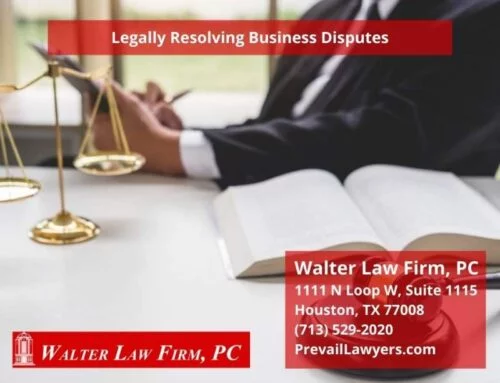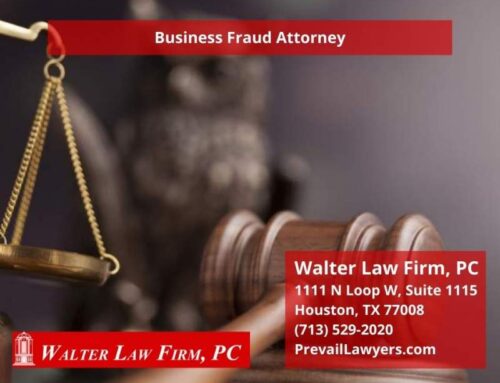It happens sometimes – one of our customers files bankruptcy. What does this mean to you as a creditor?
Your first notice that this has happened is probably either going to be a verbal notice when you call for payment, or a notice from the court. If you receive a verbal notice, ask for the case number, chapter, court, and name and phone number of the debtor’s attorney. It is not unusual for a debtor to say that they have filed bankruptcy, when, in fact, they haven’t yet. Asking for the case number will allow you to screen out these “phoney” cases, and give you the information necessary to file a proof of claim if the debtor has filed bankruptcy.
If you are listed as a creditor, you will receive a written notice from the court, but that usually is not mailed for about 30 days after the case is filed. The notice will contain all of the information necessary for you to file a proof of claim, as well as the name of the trustee, and date set for the creditors’ meeting, as well as a form for filing your proof of claim. The form is fairly self-explanatory, but creditors should be careful to attach copies of any contract or invoices in support of the claim. The claim should be filed as “unsecured” unless the creditor has a security interest in particular property owned by the debtor (such as a lien on a house, car or other personal property), and as “non-priority” unless your claim is for wages, taxes or services to the debtor while they are in bankruptcy. You must file your claim within 90 days of the creditors meeting (the deadline will be on the notice you receive). For many Chapter 7 cases, the notice will state that the case is a “no asset” case, and no proof of claim should be filed. If assets are found, you will receive a second notice with a deadline for filing your proof of claim. I always recommend sending an extra copy of the claim, with any attachments, to the clerk’s office for filing, along with a self-addressed, stamped envelope, so you can receive a file-stamped copy of the claim for your file.
The two most important things about bankruptcy are the automatic stay and the discharge. The automatic stay is an automatic (upon filing) court order prohibiting anyone from taking any action against the debtor or the debtor’s property without bankruptcy court permission. This means that lawsuits on file are put on hold, foreclosures are halted, and phone calls and letters to the debtor to collect any amount due must stop. Federal judges take their orders very seriously, and expect you to do the same, even if the order is automatic. Therefore, from the moment you are aware that the debtor is in bankruptcy, you must do whatever it takes to make sure that your company does not violate the automatic stay. If you fail to do so, you may be subject to paying a fine to the debtor or his attorney when they go to court and tell the judge that you refused to obey.
The discharge is a court order absolving the debtor from any legal obligation to pay the debts listed, and is the ultimate objective of bankruptcy. With a discharge, the automatic stay becomes permanent, and actions against the debtor or his property to collect a discharged debt are a violation of the court’s order. Once a discharge is granted, (at the end of the case), secured creditors will retain their security interest in the debtor’s property, but virtually all unsecured debt will be discharged. Exceptions are child support, debts incurred by fraud, and (but not all!) tax debt. Other debts which will not be discharged are those incurred after filing bankruptcy, and pre-bankruptcy debts which are not listed by the debtor, where the creditor did not receive notice of the bankruptcy in time to file a proof of claim.
A discharge is different than a dismissal. If the case is dismissed, the debtor has not received a discharge, and is no longer in bankruptcy, so the automatic stay no longer applies. You are free to take any action you deem appropriate against a debtor whose bankruptcy was dismissed.
If the case is filed under Chapter 7, this means the debtor will surrender all of their non-exempt assets (those not protected by law) to the bankruptcy trustee. If the debtor is a business, the business will be liquidated. The trustee’s job is to collect all of the assets, sell them, and distribute the proceeds to the creditors in the order of priority set out in the Bankruptcy Code. At the end of the case, any balances due are discharged.
In a Chapter 13 case, the debtor will keep all or most of his property, but will make payments for between 36 and 60 months to the bankruptcy trustee; again, the trustee will distribute the money to the creditors. The debtor is required to pay all of his “discretionary income” into the plan, and cannot incur additional debt during the plan. If he fails to make all the payments, or abide by the plan, the case may be dismissed. If all the payments are made, the remaining debts, if any, are discharged.
The third most common form of bankruptcy is Chapter 11. This is a corporate reorganization, but may be used by individual debtors if they have too much debt or are not qualified to file under Chapter 13. A Chapter 11 plan is much more complex than one under Chapter 13; these plans typically run at least 30 pages, and must also be accompanied by a disclosure statement which gives a history of the debtor’s operations, officers, and forecasts for what the creditors would receive if the debtor filed Chapter 7.
When reviewing a chapter 11 plan, you will want to know what “class” or group your claim belongs to. The plan and disclosure statement will describe each class of claim, and its treatment under the plan, which must conform to the requirements of the bankruptcy code, and must provide that each class of creditor receive at least as much under the plan as they would in a Chapter 7 case. The plan will also set out a schedule of payments to be made to each class of creditors, and allow voting to accept or reject the plan by each creditor, along with a ballot and instructions for casting your vote. After you have looked at the plan and disclosure statement, decide whether you feel you are better off with or without the debtor’s proposed plan.
And, as always, if you get confused, call your favorite lawyer.






